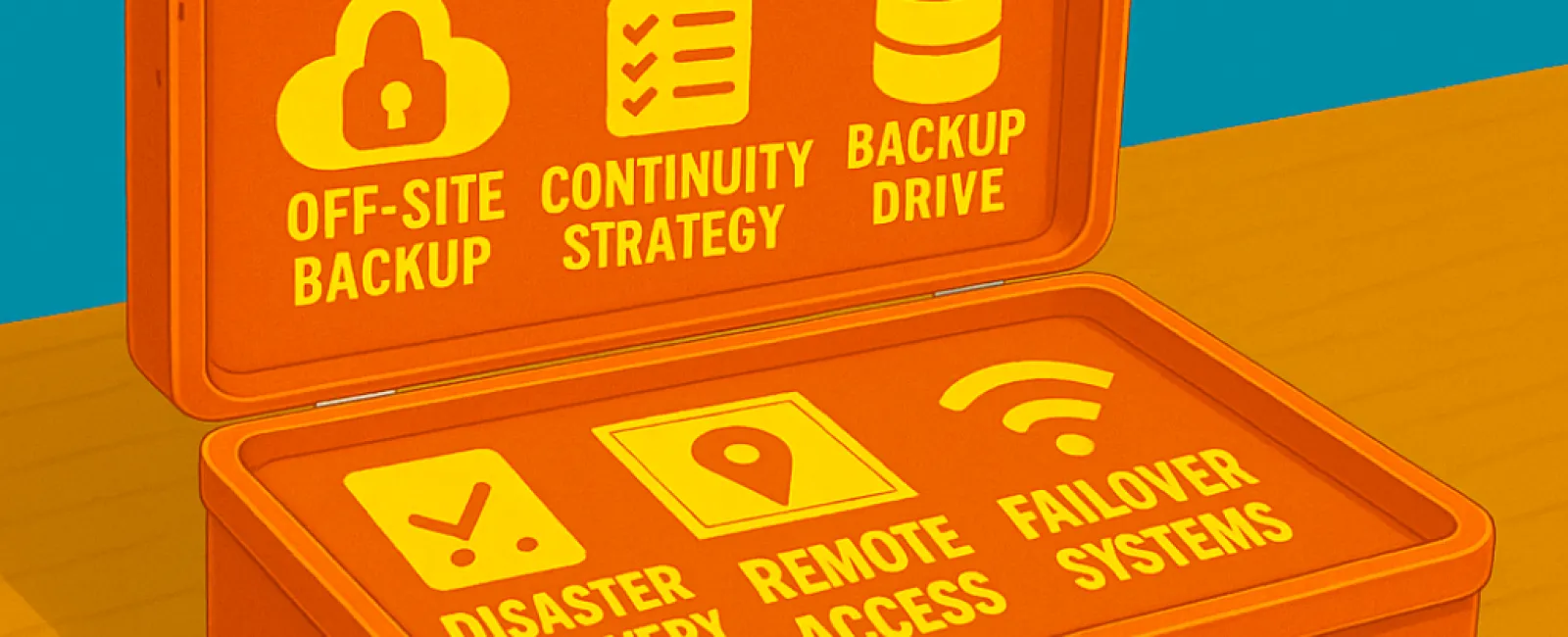July 28, 2025
Unexpected power failures, cyber threats, equipment breakdowns, and natural calamities can strike without warning, posing severe risks to small businesses. Many believe that merely backing up data is sufficient, but restoring files alone won't keep your business operational. Without access to critical systems, the ability to support remote work, and clear communication with your team and clients, even brief interruptions can cause lasting damage. A dependable IT partner doesn't just provide backups—they deliver a comprehensive strategy to ensure your business stays up and running through any crisis.
Backups Are Just The Start—True Resilience Requires Continuity
Backups are crucial, but they represent only one piece of the puzzle. What your business truly needs is a robust continuity plan that proactively guarantees ongoing operations during and after disruptions.
When systems fail, data becomes unreachable, or your workplace becomes unusable, relying on a backup stored locally offers little relief. Without a well-defined plan for rapid recovery, your business faces significant risks including lost revenue, damaged reputation, and compliance violations.
Understanding The Critical Difference: Backups vs. Business Continuity
Many businesses make this mistake:
● Backups enable data restoration.
● Continuity ensures your business keeps running no matter the challenge.
An effective continuity plan addresses essential questions such as:
●
What is our recovery time objective?
●
Where will employees work if the office is unusable?
●
Which systems are critical to our mission?
●
Who is responsible for activating the recovery process?
The plan also includes vital elements like:
●
Encrypted, off-site, and tamper-proof backups
●
Prioritized recovery objectives (RTO and RPO)
●
Preparedness for remote work scenarios
●
Redundant infrastructure and automatic failover systems
●
Routine disaster recovery drills
If your IT provider can't confidently guide you through these critical aspects, it means you're relying on luck rather than protection.
Could This Happen To Your Business?
This isn't just a scare tactic—it's a reality that many businesses have faced with severe consequences. Examples from recent years include:
●
Florida hurricanes forced hundreds of businesses to shut down due to lack of cloud access.
●
North Carolina floods wiped out on-site servers, erasing vital records and invoices.
●
California wildfires destroyed entire offices without off-site recovery plans.
●
Numerous small businesses struck by ransomware discovered their backups were either corrupted or never tested.
Disasters don't only impact large corporations; small businesses face these threats every day.
Essential Questions You Should Ask Today
If disaster struck tomorrow, would your business keep running?
Make sure to ask your IT provider:
●
How quickly can we recover from a ransomware attack?
●
Are our backups regularly tested, and which systems do they cover?
●
What is the contingency plan if a fire or flood damages our office?
●
Does our continuity plan comply with industry standards and regulations?
●
Can we continue serving clients if our team must work remotely?
If you don't have clear, confident answers, your business could already be vulnerable.
Disasters Are Inevitable. Downtime Doesn't Have To Be.
While you can't prevent every outage, cyberattack, or natural disaster, you can control how your business responds.
A competent IT provider helps you bounce back.
An exceptional one ensures your operations never miss a beat.
Ready to evaluate your business's resilience?
Click Here or call us at 316-867-4566 to schedule your FREE 15-Minute Discovery Call and safeguard your business against unexpected downtime.





